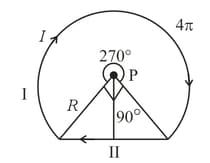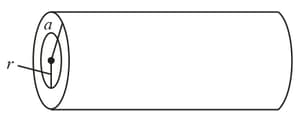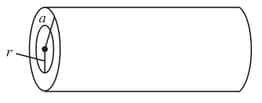Maharashtra Board Solutions for Chapter: Magnetic Fields due to Electric Current, Exercise 3: Exercises
Maharashtra Board Physics Solutions for Exercise - Maharashtra Board Solutions for Chapter: Magnetic Fields due to Electric Current, Exercise 3: Exercises
Attempt the practice questions on Chapter 10: Magnetic Fields due to Electric Current, Exercise 3: Exercises with hints and solutions to strengthen your understanding. Physics Standard 12 solutions are prepared by Experienced Embibe Experts.
Questions from Maharashtra Board Solutions for Chapter: Magnetic Fields due to Electric Current, Exercise 3: Exercises with Hints & Solutions
A moving coil galvanometer has been fitted with a rectangular coil having 50 turns and dimensions . The radial magnetic field in which the coil is suspended is of . The torsional constant of the spring is degree. Obtain the current required to be passed through the galvanometer so as to produce a deflection of .
A solenoid of length and in diameter has winding of 1000 turns and carries a current of . Calculate the magnetic field at its centre along the axis.
A toroid of narrow radius of has 1000 turns of wire. For a magnetic field of along its axis, how much current is required to be passed through the wire?
In a cyclotron protons are to be accelerated. Radius of its D is . and its oscillator frequency is . What will be the kinetic energy of the proton thus accelerated?
Proton mass
A wire loop of the form shown in the figure carries a current I. Obtain the magnitude and direction of the magnetic field at P. Given:

Two long parallel wire's going into the plane of the paper are separated by a distance R, and carry a current I each in the same direction. Show that the magnitude of the magnetic field at a point P equidistant from the wires and subtending angle from the plane containing the wires, is . What is the direction of the magnetic field?
Figure shows a section of a very long cylindrical wire of diameter a, carrying a current I. The current density which is in the direction of the central axis of the wire varies linearly with radial distance r from the axis according to the relation Obtain the magnetic field B inside the wire at a distance r from its centre.

In the figure below, what will be the magnetic field B inside the wire at a distance r from its axis, if the current density J is uniform across the cross section of the wire?

